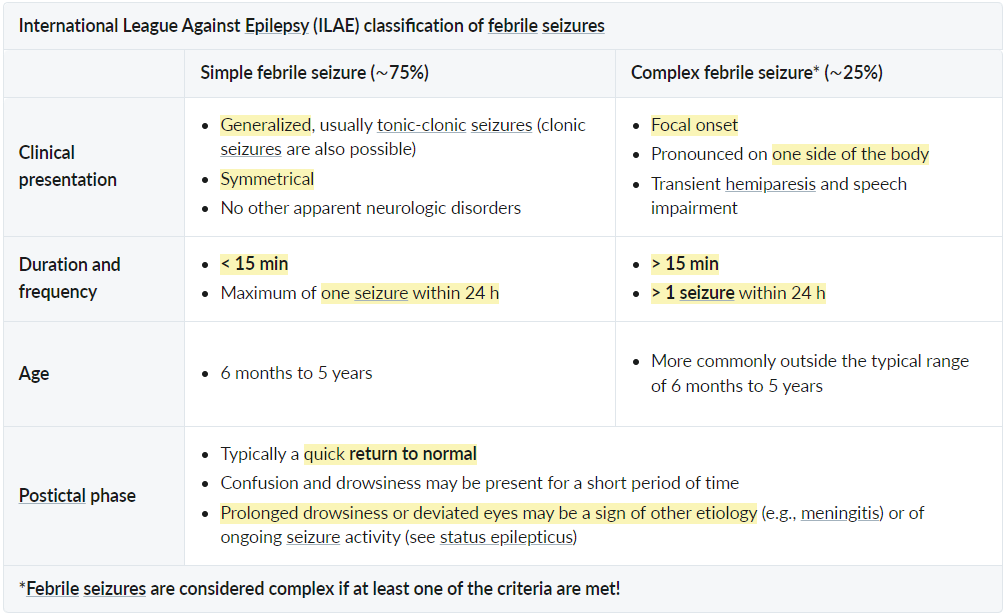Febrile seizures are seizures that are associated with fever (mainly temperatures exceeding 38°C (100.4°F) in the absence of CNS infection, metabolic abnormalities, or a history of afebrile seizures.
Epidemiology
- Peak incidence: 2nd year of life; most commonly occurs between 6 months and 5 years of age
- Prevalence: Febrile seizures occur in ∼ 4% of all children.
Etiology
The exact pathophysiological mechanisms of febrile seizures are not known. Risk factors:
- Genetic predisposition
- High fever (> 40°C (104°F))
- Viral infection (e.g., HHV-6, influenza)
- Recent immunization
Pathophysiology
Clinical features

Diagnostics
- Check signs of meningeal irritation to rule out meningitis.
Treatment
Uncomplicated seizures usually resolve after a few minutes spontaneously. However, abortive therapy should be administered if seizures ≥ 5 min or complex.
- Abortive therapy
- Treatment of choice: IV lorazepam
- Reassure caregivers and provide information
- Inform the caregivers that there is low risk of neurological damage or death after an initial febrile seizure.
- After a febrile seizure, initiate antipyretic therapy (NSAIDs and acetaminophen) at an early stage (temperatures from 38°C (100.4°F)) as they restore the central thermoregulatory setpoint back to normal by reducing the synthesis of prostaglandin E2.